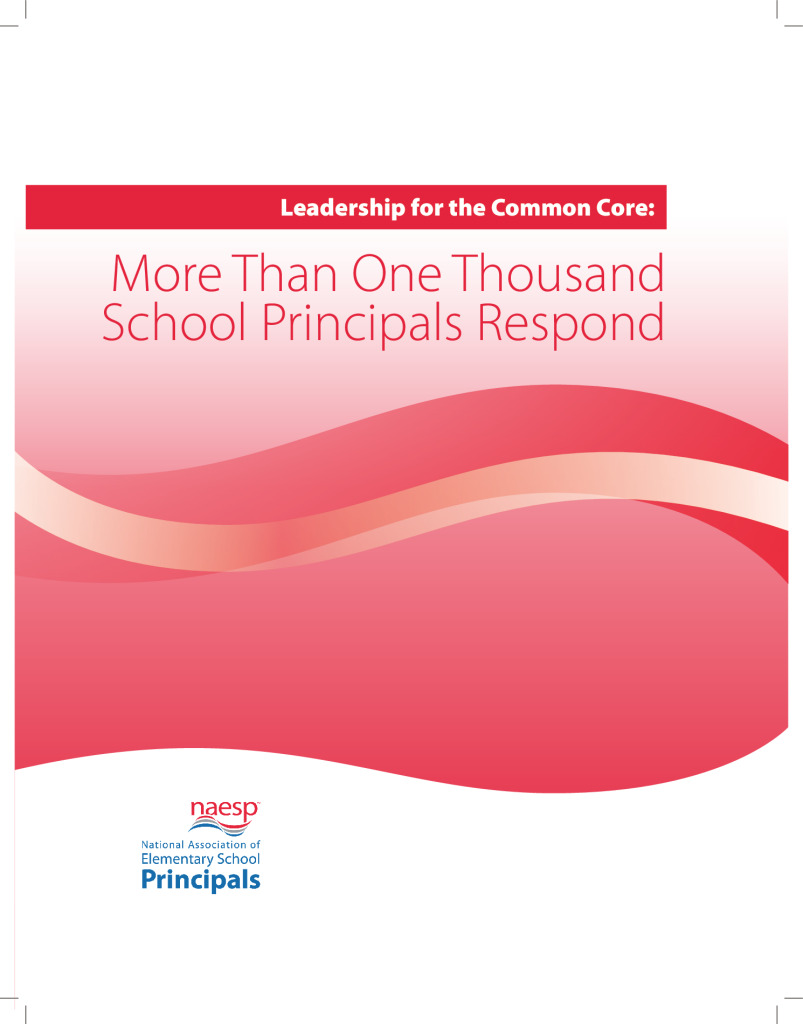Resource Hub
Explore guides, research papers, policy briefs, and tools to aid decisions on standards and assessments.
NAESP Leadership for the Common Core Survey
Two surveys, reflecting the views of more than 1,000 principals in 14 states that have adopted CCSS, show that the majority of the nation’s elementary and middle-level principals strongly agree that CCSS will provide more meaningful assessments of student learning, increase students’ skill mastery across subjects, and provide a curriculum frame leading to deeper understanding of conceptual thinking. However, despite having received some professional development provided by states and districts, the majority of principals indicated a lack of necessary preparation to lead and sustain the vision of CCSS over the long term. Principals noted a compelling need for more adequate preparation and professional development in specific leadership areas, such as how to manage the change process in the schools, evaluate teachers’ use of the new standards during instruction, align the school’s instructional focus, make key decisions on the best types of professional development to support teachers, and develop extended learning opportunities to sufficiently address CCSS implementation. A majority of the principals surveyed also said that they need sufficient allocation of financial resources to implement the array of school-based activities related to CCSS.


The survey and focus groups utilized well-defined and accepted methods. The supporting literature throughout the reports, both the broader survey and urban survey, is excellent. While the Foreword in the full survey certainly represents strong NAESP proponent point of view, the actual survey itself and the interpretations are reasonable. Communications quality throughout is generally excellent, although text is arguably a bit long at times. The results between the surveys show very few differences between the results of the full survey and the results from the urban school principals. The actual use of the survey is difficult to judge primarily because the results are not surprising; in essence principals strongly support the Common Core, have received training on its content and implementation, but feel that resources to support the Common Core are thin. Perhaps the surveys’ greatest utility will be to reinforce the need for more direct resources to schools to support the Common Core, and if that goal is accomplished, the two surveys will likely have met their intended purposes.